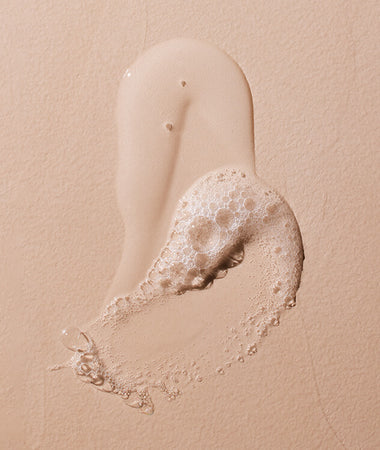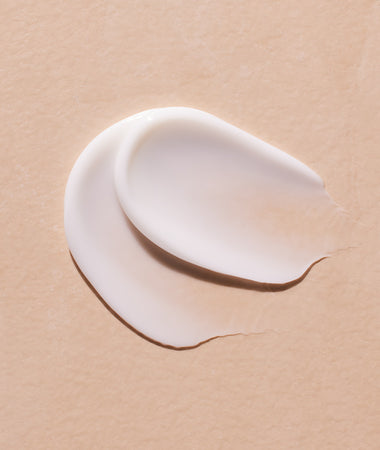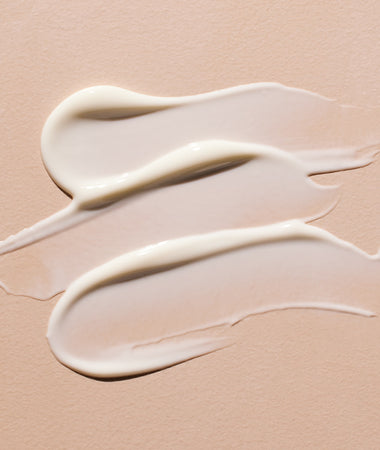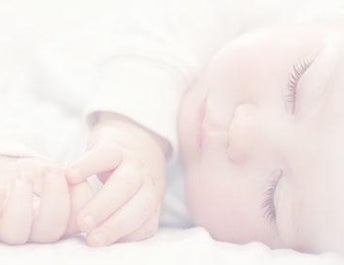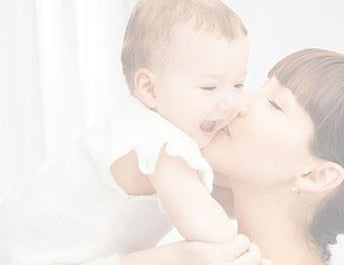
7 Types Of Eczema: Causes, Symptoms, And Treatment
If you or someone you love has eczema, you know that it can be a frustrating condition. But did you know that there are actually several different types of eczema? While multiple skin conditions fall under this category, they all have an itchy, inflamed rash in common.
In this article, we’ll discuss the seven different types of eczema to help you understand what is happening on your or your little one’s skin and the best ways to treat it.
But first, let’s look at what eczema is in general and how many people suffer from this skin condition.
Table Of Contents
- What Is Eczema?
- 7 Types Of Eczema
- Can You Get More Than One Type Of Eczema?
- Other Skin Conditions That Mimic Eczema
- Preventing Eczema Flare-Ups
What Is Eczema?
Eczema is a general term for a group of inflammatory skin conditions. The main symptom is an itchy, red rash that can appear on any part of the body but is most commonly found on the face, hands, feet, elbows, and knees.
Eczema can affect people of all ages. However, most people are diagnosed with the condition as an infant or child. In fact, the National Eczema Association states that 9.6 million Americans under 18 have some type of eczema. Of those cases, a third of them have moderate to severe symptoms.
The good news is about 80% of children diagnosed with eczema will outgrow the disease by the time they reach adulthood. But the younger your child is when they’re diagnosed — and the more severe their symptoms — the more likely they will still have flare-ups as adults.
7 Types Of Eczema
Now that you know more about what eczema is, let’s look at the seven different types.
1) Atopic Dermatitis
Atopic dermatitis is the most common form of eczema and probably what comes to mind when you think of this condition. While eczema often begins in childhood and improves in adulthood, it’s a chronic condition that people live with their whole lives.
If you have atopic dermatitis, your skin has a compromised skin barrier, which is what keeps the good guys (like moisture) in and protects you from the bad guys (like allergens, irritants, and bacteria).
Skin with a compromised barrier can be dry, itchy, sensitive, and susceptible to infection.
Causes
It’s not entirely clear what causes atopic dermatitis, though it may have to do with genetics. In fact, it could be due to a combination of genetics, dry skin, an autoimmune condition, and environmental triggers.
Stress has also been shown to exacerbate atopic dermatitis, so it’s important to help your child learn stress management techniques.
For example, progressive muscle relaxation has been shown to help reduce stress. This is a form of mindfulness in which different muscle groups are sequentially tensed up for 10 seconds, followed by a 20-second relaxation period before repeating.
Symptoms
Some symptoms of atopic dermatitis include:
- Itchy skin
- A rash on the inside of elbows or backs of knees
- A rash on your baby’s scalp or cheeks
- Thicker or discolored skin
- A rash that bleeds or leaks fluid when you scratch
- Easily infected skin
- Difficulty concentrating or sleeping due to itching
Let’s discuss that last one for a second. Nearly 90% of children with atopic dermatitis have sleep disturbances. This means their parents aren’t sleeping as well, either. In fact, many parents of children with this condition get less than six hours of sleep each night.
So, if you can help treat your child’s condition, your entire household might benefit from extra shut-eye.
Treatment

Unfortunately, there is no cure for atopic dermatitis. Some treatments include topical steroid or non-steroidal creams; however, there are several ways to help control the symptoms naturally.
If you’re looking for natural eczema treatments for your little one, read our complete parent’s guide, reduce symptoms by bathing your baby with extra care, and dress them in soft, breathable clothing to help avoid flare-ups.
It’s also important to use a moisturizer throughout the day and after bath time that’s designed specifically for eczema-prone skin, like Mustela Stelatopia Emollient Cream.
When your little one is experiencing a flare-up, soothe their skin with our steroid-free Stelatopia Intense Eczema Relief. Made with 99% ingredients of natural origin, this emollient is safe for sensitive, delicate skin and helps relieve irritation caused by eczema.
2) Contact Dermatitis
Contact dermatitis is an easy one to remember since it’s your skin’s reaction to coming into contact with something that it disagrees with.
The offending party could be a substance that causes an allergic reaction (allergic contact dermatitis) or one that simply causes irritation (irritant contact dermatitis).
Causes

The allergy or irritation from contact dermatitis can be caused by a variety of substances, and what affects the skin may be different for each person!
Here are a few things that can cause this type of skin condition:
- Laundry detergent
- Bleach
- Soap
- Nickel
- Wool
- Poison ivy
- Synthetic fragrances
- Perfume
- Latex
Unfortunately, it can be difficult to determine what exactly is causing the reaction. If you think your child may have contact dermatitis, their healthcare provider may recommend patch testing. They’ll expose your child’s skin to small amounts of potential allergens to see if there’s a reaction.
You can also use some good old-fashioned detective work by paying attention to when the rash appears and what your child has come into contact with recently. Keeping a journal of their symptoms and potential irritants they've been around can help you watch for patterns.
Symptoms
- Itching, stinging, or burning
- Dryness or cracking
- Redness
- Hives
- Blisters
Treatment
Your doctor may recommend applying a steroid cream to help with the itching. For more extensive rashes, oral corticosteroids might also be given.
If you don’t love the idea of using a steroid cream, try our natural alternative to soothe skin and relieve eczema symptoms: Stelatopia Intense Eczema Relief.
Of course, the best and easiest way to avoid contact dermatitis is to stay away from what causes the rash in the first place! You can often identify these irritants if the itching begins soon after contact with something or is in a particular area, like where you often wear jewelry.
Your doctor can also do patch testing to find out what may be causing allergic contact dermatitis.
3) Nummular Eczema
This type of eczema gets its name from the kind of rash it creates: round, coin-shaped red marks. If you’re not up on your Latin, “nummus” is a Latin word that means “coin,” so this skin condition is aptly named.
Causes
The exact cause of nummular eczema is a bit mysterious, but it’s more likely to be seen in men and in people who have atopic dermatitis as well.
Triggers include dry skin, stress, soap, surgery, scrapes on your skin, and reactions to bug bites.
Symptoms
- Circular patches that can itch or ooze
- Spots typically on the arms or legs (but can be elsewhere)
- Spots that are red, pink, or brown and scaly
Treatment
Since this type of eczema is easily confused with other circular skin conditions, like fungal infections, it’s best to schedule a visit with the dermatologist to seek proper treatment.
They may give you topical corticosteroids or treat you with topical antibiotics if an infection has developed.
4) Neurodermatitis

Neurodermatitis is a cycle of itching and then scratching, which makes your skin itch even more. Vigorous scratching of this condition can also damage nerve endings in your skin and make the itch worse.
Causes
Like some of the other types of eczema, the exact cause of neurodermatitis is unknown. It’s more common in women, adults between 30 and 50, people with anxiety disorders, and individuals with another type of eczema as well. However, it rarely affects children.
Tight, itchy clothing can set off the cycle of neurodermatitis, as can bug bites and dry skin.
Symptoms
- One or two itchy patches
- Dry, thick, scaly skin
- Patches that bleed when scratched
- Itching that increases when you’re stressed or anxious
Treatment
Your doctor may suggest a topical steroid or non-steroid cream for neurodermatitis, both of which can help calm the itching.
Other approaches include oral medication, patches with a numbing agent, applying plastic wrap after moisturizer or gauze with zinc oxide, relaxation techniques, and counseling.
To relieve itching in general, you can take colloidal oatmeal baths, wear non-irritating clothing, and keep your skin protected with a fragrance-free moisturizer formulated with natural ingredients.
5) Seborrheic Dermatitis

Seborrheic dermatitis mainly affects the scalp and goes by a few different names. The most common term for this condition in adults is dandruff, while it’s often called “cradle cap” in babies.
Causes
Seborrheic dermatitis is another type of eczema with an unknown cause, although it’s thought to be an inflammatory reaction related to an excess of Malassezia yeast. Hormone levels, oily skin, and genetics could also play a role.
There are also certain triggers and conditions that make you more susceptible to seborrheic dermatitis, such as stress, extreme weather temperatures, the existence of other skin conditions, HIV, and depression.
Symptoms
- Skin flakes
- Areas of oily skin with white or yellow scales
- Redness and swelling
Treatment
If you’re not sure how to tell if your little one has cradle cap or simply a dry scalp, you can learn about the differences here.
To ease symptoms, treat your baby’s scalp with a gentle cream, like Mustela’s natural Cradle Cap Cream, and be sure to wash their hair with a gentle shampoo that’s formulated to clean the hair and scalps of babies with eczema-prone skin, like our Stelatopia Foam Shampoo.
Treatment for an adult can vary depending on where you have seborrheic dermatitis, but the goal is to minimize flaking and scaling while calming itching and inflammation.
Washing and moisturizing your skin is important, but specific treatment may include antifungal cream, steroid cream, or a medicated shampoo.
6) Stasis Dermatitis
This skin condition is also called gravitational dermatitis, venous eczema, or venous stasis dermatitis and, if you haven’t already guessed, has to do with veins and blood flow.
Simply put, it is a pooling of water and blood cells in your legs. The valves in your veins that keep blood moving up to your heart can become damaged or weak, causing the blood to pool and leak out into the tissues of your legs.
This leaking not only causes inflammation but can also lead to a breakdown of skin tissue.
Causes
Stasis dermatitis can develop due to poor circulation in your legs and is the result of fluid leaking out of veins and accumulating under your skin.
It can be common in people with high blood pressure, obesity, multiple pregnancies, and those who spend long hours sitting or on their feet. It most often appears in people over the age of 50.
Since venous insufficiency can be caused by more serious conditions, it’s important to speak with your doctor if you suspect you might have this type of eczema.
Symptoms
- Swelling in the lower legs or ankles
- Orange-brownish spots
- Discoloration
- Varicose veins
- Sores on lower legs or tops of feet
- Itching, scales, or dry skin
Treatment
Your doctor will want to address any root cause of stasis dermatitis and may recommend antibiotics if your skin has become infected or a steroid to soothe inflammation.
Wear compression socks to help with swelling and, when you can, elevate your feet above your heart.
7) Dyshidrotic Eczema

Dyshidrotic eczema gives you small but very itchy blisters on your hands and feet — specifically the palms, soles of feet, and the sides of fingers and toes. Because of this, it is often called foot-and-hand-eczema.
Causes
Dyshidrotic eczema is more common in women, adults between 20 and 40 years old, and those who have another type of eczema, but the exact cause is unknown.
Allergies, stress, metals, heat, and humidity can all trigger a flare-up.
Symptoms
- Itchy or painful blisters
- Patches on the palms, soles of feet, and the sides of fingers and toes
- Red, dry, cracked, or scaly skin
Treatment
If your dyshidrotic eczema is related to a fungal infection or you are likely to develop a skin infection, your doctor may prescribe a specific regimen to follow or medications to take.
Otherwise, it can help to wash your skin and pat it dry thoroughly so your skin doesn’t stay wet, apply a gentle but protective moisturizer, reduce stress, avoid triggers, and apply cold compresses.
Can You Get More Than One Type Of Eczema?
Now that you know more about each of the different types of eczema, you may be thinking that you've seen multiple symptoms in yourself or your child.
The truth is you can have more than one type of eczema or even multiple types at the same time. Atopic dermatitis, for example, often occurs with both seborrheic and contact dermatitis.
But since so many symptoms overlap, it can be hard to tell where one type of eczema ends and another begins — especially when you consider that there are other skin conditions that produce similar symptoms.
Other Skin Conditions That Mimic Eczema

These skin problems can be easily mistaken for eczema:
Psoriasis: This condition is characterized by red, scaly patches on the skin. It is not as common in children as eczema but can still affect them.
Scabies: This is a skin infection caused by tiny mites that burrow into the skin. It can cause intense itchiness and a rash made up of small bumps and blisters.
Hives: These are itchy, red welts that can appear on the skin. They are often the result of an allergic reaction and can come and go quickly.
Dry skin: Though dry skin is a symptom of eczema, not every case of dry skin is eczema. If your child’s skin is simply dry and not itchy, red, or inflamed, they may just need a more robust skincare routine that includes a gentle cleanser and a hypoallergenic moisturizer.
If you aren't sure what your child is dealing with, it’s best to see a board-certified dermatologist. They can make an accurate diagnosis and develop a treatment plan that will provide relief.
Preventing Eczema Flare-Ups
Even after you get your child's eczema under control, flare-ups can still happen. A flare-up is when the symptoms of eczema get worse. They can be caused by a number of things, including:
- Dry skin: When the weather is dry or cold, it can strip moisture from the skin, leaving you prone to more symptoms.
- Irritants: Soaps, detergents, perfumes, and other harsh chemicals can irritate the skin and trigger eczema.
- Allergens: Many people with eczema also suffer from allergies. If you come into contact with something you’re allergic to, your symptoms can get worse.
- Infections: Bacterial, viral, or fungal infections can cause your eczema to flare. Sometimes, you can cause an infection by scratching your eczema patches. If you notice redness or ooziness, always consult with a doctor as antibiotics may be needed.
- Stress: Stress can cause all sorts of problems, including skin issues like eczema.
- Environmental factors: Changes in temperature or humidity can impact your skin. Often, eczema worsens in the summer and winter, when you're more likely to experience temperature extremes.
If you notice your child's eczema starting to flare up, there are things you can do to help them feel better and prevent the flare-up from getting worse.
Moisturize Regularly
As we’ve mentioned, dry skin is one of the main triggers of eczema flare-ups. So, it's important to keep the skin moisturized with a product like our Stelatopia Emollient Cream.
Don't Get Too Sweaty
Sweat and eczema go hand in hand. It can dry out your child's skin and irritate their eczema.
It’s important to keep your child cool and dry to help prevent a flare-up. For example, if they get sweaty after playing, a quick bath can help.
Dress Carefully
You'll also want to ensure your child wears soft, breathable clothing so they don't overheat.
Cotton, linen, and other natural fabrics are great choices. And at night, try our Stelatopia Skin Soothing Pajamas. These 100% cotton pajamas utilize microcapsule technology to keep your child's skin moisturized all night long.
Choose The Right Skincare Products

Not all skincare products are a good fit for people with eczema-prone skin. In fact, some can actually make eczema worse. Be sure to choose products that are free from harsh chemicals and fragrances.
Our Eczema Bath Time Set can help soothe and protect your little one’s sensitive skin. It comes with three separate products to help you care for your child's skin, including Stelatopia Cleansing Oil, Stelatopia Cleansing Gel, and Stelatopia Emollient Cream.
Each one is specially formulated to provide relief for eczema-prone skin. And they can be used together or separately, depending on your child's needs.
Note: When choosing products for eczema-prone skin, be sure to look for ones certified by the National Eczema Association.
Reduce Stress
As we’ve touched on above, if you or your child are dealing with eczema, it's important to find ways to reduce stress.
Since stress makes eczema worse, it’s essential that you take time for yourself each day to relax and de-stress. And if your child is old enough, teach them some relaxation techniques to use when they're feeling overwhelmed.
If they're still really young, having routines and rituals can help provide a sense of security and calm. Try things like reading a bedtime story or singing a lullaby every night before sleep. This way, your baby learns what to expect and won’t be stressed by unknown factors before bed.
Avoid Triggers
A trigger is anything that makes eczema worse. Unfortunately, it may take some trial and error to figure out what yours are. If there are known triggers for a certain type of eczema, you’ll find that information in the causes section above.
Otherwise, you'll need to pay close attention to your child's skin and see what makes their eczema flare. Once you know what the triggers are, you can take steps to reduce contact with it or avoid it altogether.
Addressing All Types Of Eczema Naturally

No matter which type of eczema you have, there are ways to care for your skin naturally. After speaking with your doctor, turn to gentle products that are fragrance-free and certified by the National Eczema Association.
By understanding the causes, treatments, and symptoms of the seven types of eczema, you’re no longer in the dark. You’re now equipped to find the right ways to protect yourself and your family!


